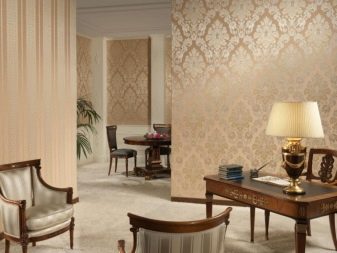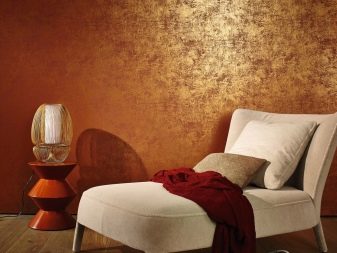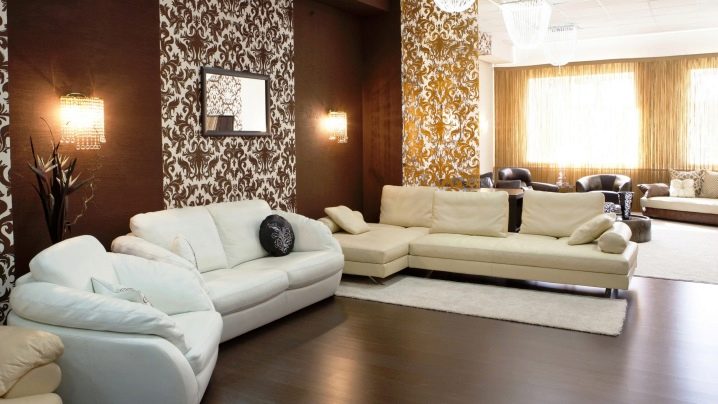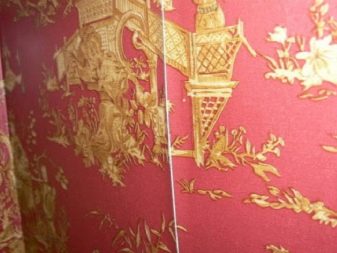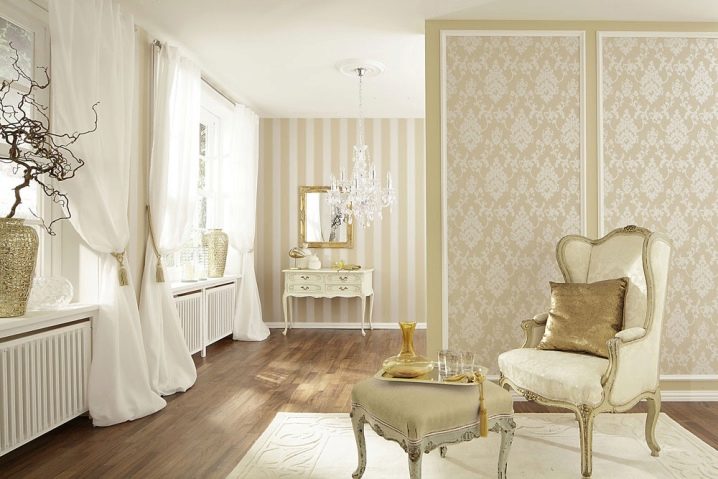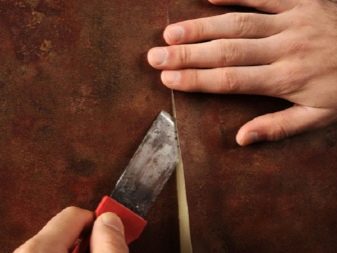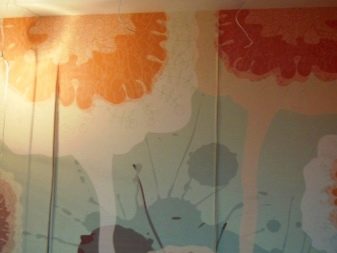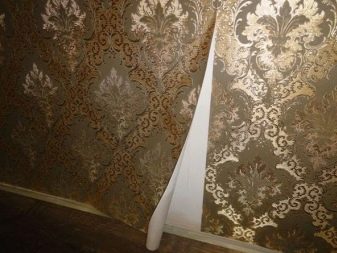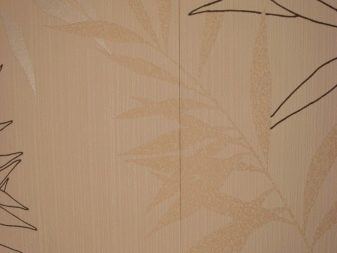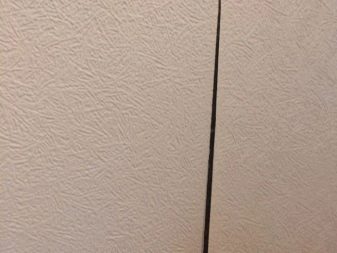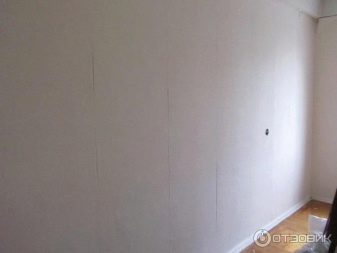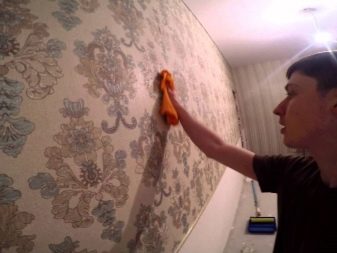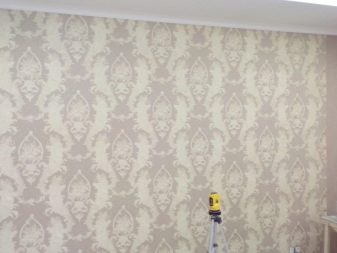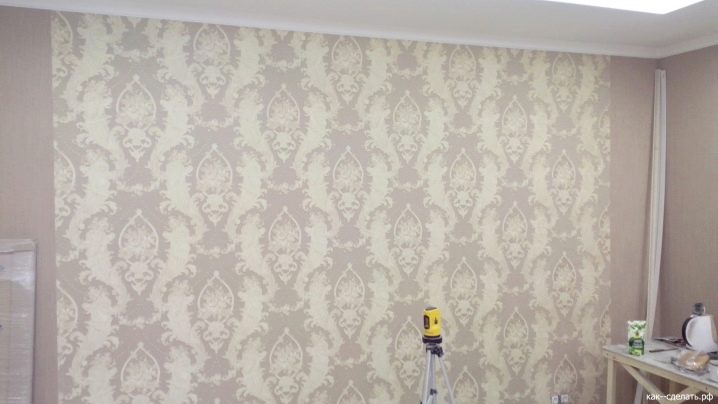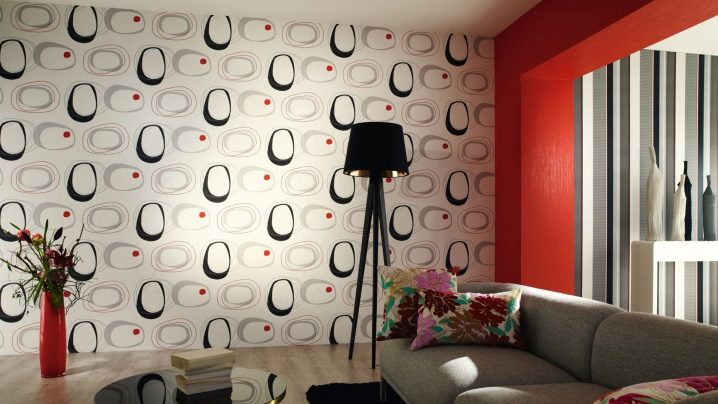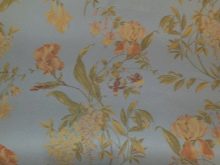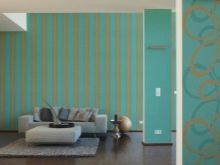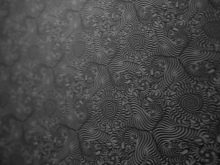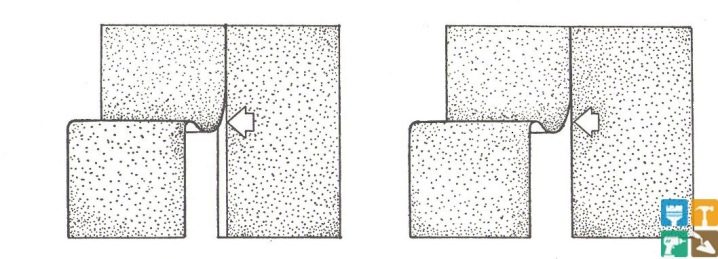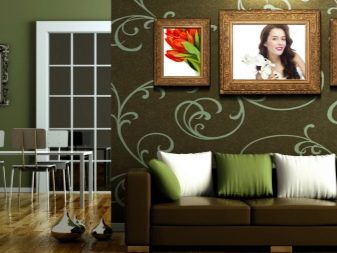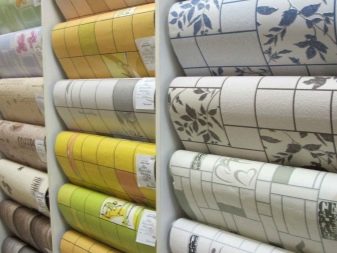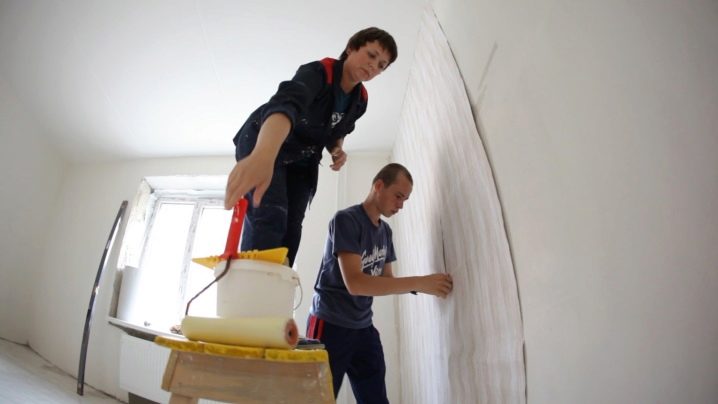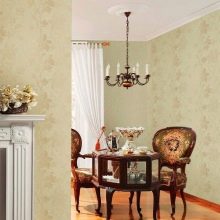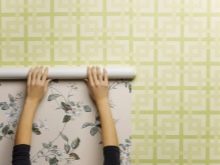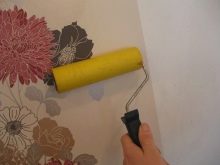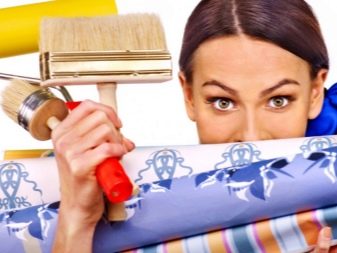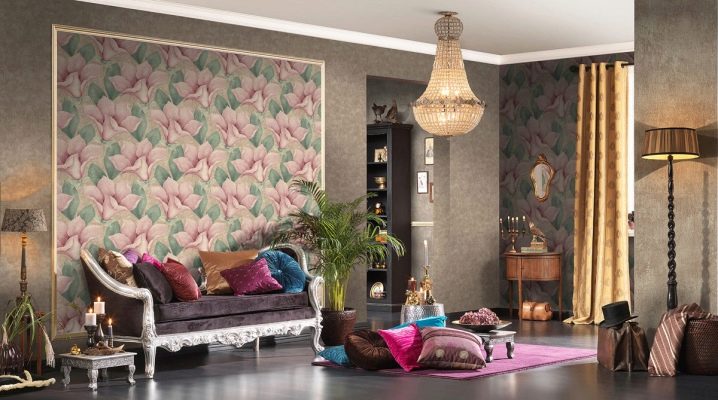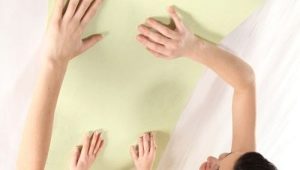How to glue the wallpaper at the joints, if they diverged at the seams?
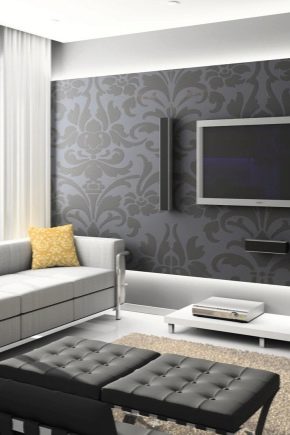
Every person at least once in his life did the repair with his own hands. And, it would seem, the task is completed, but after a while you begin to notice that the wallpaper comes off. Today we will talk about how to glue the wall finish so that it does not disperse at the seams.
Why wallpaper unglued?
There are a number of reasons why a new repair takes an unaesthetic appearance. The reasons for this are very diverse, but more often than not, this is the failure to follow simple rules:
- Improperly prepared surface. Before starting work, the wall should be checked for cracks and shedding plaster.
- Incorrect glue selection.
- Non-compliance with the proportions of dilution of glue.
- Neglect of pasting rules. It is necessary to carefully study the instructions before starting work.
- Drafts - this is one of the main reasons for wallpapering. All doors and windows must be closed.
- Thermal failure. Drying or damping is unacceptable.
- Improper or insufficient application of glue to the surface. Before use, you should read the instructions.
- Poor tool and material.
Consider the listed nuances, and the wallpaper will not fall behind and will last a long time.
Humidity
This problem may be the basis for redoing all repairs. After all, the plywood overgrown wallpaper is familiar to many. It may be associated with:
- problems with heating.
- problems with ventilation.
- flooding.
This scourge may face the residents of the private sector. Especially if their houses are located near the rivers. In the spring during the flood, when the river spreads, the wallpaper leaves. After such flooding will have to do the repair again.
Residents of the first floors, under whose apartments there is a basement, are best acquainted with the problem of humidity in an apartment building. In such apartments, repairs have to be done more often.Due to the high humidity, the fabric is constantly peeled off.
Fungus
Life does not stand still. The simple windows were replaced by double-glazed windows, which in old-type homes contribute to the formation of condensate, and this threatens to cause fungus on the walls. Also because of this, wallpaper often diverges. In each room there are fungi, and they manifest themselves as soon as favorable conditions for this appear. It is easy to recognize a fungus: On the ceiling, around the windows and in the joints of the house black spots are formed, which quickly grow.
One of the main reasons for the appearance of such defects is dampness, which can come from the basement. It is necessary to check the basement and foundation of the house for infection by fungus. It may also occur due to leaking pipes, so before starting the repair, inspect everything in the bathroom. You should not allow poor ventilation, which often leads to the formation of condensate from the air in the room. Frozen in the winter, the walls also provoke the formation of fungus.
There are several ways to avoid and cure the fungus:
- Frequent airing.
- At repair it is possible to use vapor-permeable coatings.
- Elaboration of walls with special chemical means.
What glue to use?
Having bought an adhesive composition, be sure to follow the instructions on the package. There are powder and liquid glue. Both require compliance with the proportions when breeding. Consider the climate of the room. If it is wet, use a moisture-resistant compound.
You can not use clerical pva, as it does not guarantee adhesion to the surface and may leave brown spots after drying. There is also a wallpaper PVA. It is suitable only for paper products. Today, many different companies produce glue. You decide which brand to choose. The main thing is to remember that they are all very similar in composition.
How to glue in the joints?
If the wallpaper has diverged at the seams and come off at the joints, you need to perform simple manipulations:
- Bend the joint.
- Remove residual whitewash, debris.
- Check the wall for chipping.
- Spread the joints with glue.
- Press the wallpaper into place and work out with a rubber roller.
- Smooth all with a spatula.
- Remove adhesive residue with a cloth.
This method will return the original look to the wallpaper. You need to use the glue that worked initially.If a piece is torn off from the canvas that has departed at the joints, it can be restored. The main thing is to assemble all the parts, arrange them correctly, and then put them on the glue. The excess must be removed with a towel, smoothed with a spatula and allowed to dry. In this way, you can correct the situation after the "invasion" of the cat.
How to combine a pattern?
Choosing a wallpaper for your apartment with a picture, you should familiarize yourself with rapport. This is the frequency of repetition of the picture or its step. That he will help to combine the pattern. You can find it on the label of the roll. Knowing rapport, proceed to cutting the product. The first thing you need to open two or three tubes of wallpaper, placing them on the floor, attach the joint to the joint and look at the picture.
Can cut the roll. Masters advise to number the stripes. Do not forget about a few centimeters of stock. Before starting work, remove all outlets and switches, insulate the wires. This will help avoid wiring problems. Nothing will interfere, and the process will take less time. Upon completion of work in those places where the holes were sealed, an accurate incision is made in the form of a cross and the excess is cut off.
When pasting striped wallpaper should be alternated. Such a coating will help visually lengthen the room. You can decorate an apartment by combining monochromatic options and canvases with a pattern. Pasting needs to start from the corner. It should be glued wallpaper overlap - solid color to color. It is necessary to leave the stock not glued, after cutting off the excess and glue the wallpaper overlapping each other.
How to remove the folds after drying?
For ceiling coatings, the following method is suitable:
- It is necessary to make an incision with a sharp stationery knife along the fold.
- Glue the overlapped upper part to the lower part and smooth with a spatula.
- After drying, you need to go over the coating with sandpaper and smooth again.
- In addition to wrinkles, bubbles may appear. The syringe, glue, and towel will help to fill them.
- Carefully pierce the bubble with a needle and insert the glue inside.
- After smoothing, remove excess glue with a rag.
Tips for all kinds
The pasting process is most often the same and is suitable for all types:
- The walls should be intact, and the surface should be even and without cracks.
- Too smooth surface is not very good. She should roughen that wallpaper would not have slipped.
- Close all windows and doors, as there should be no draft.
- Observe thermal mode. Make sure the wallpaper does not dry out and not damp.
- Do not forget about the property of some products to stretch, and then tighten.
- Responsibly refer to the choice of glue.
- Do not feel sorry for glue. Coat well the joints and perimeter of the wallpaper.
- It is best to start pasting from the window.
- Do not forget about the reserve on each side of 2-3 cm.
- One wallpaper is better to glue in overlap, while others - butt.
- After you have pasted the strip, do not forget to immediately smooth it with a towel, brush or spatula to expel all the air.
- Carefully read the instructions for wallpaper and glue.
Paper
There is a clear instruction for pasting the room with paper wallpaper. First you need to determine which type you choose. It is not recommended to use simple PVA glue when pasting paper wallpaper. It can leave brown spots after drying. Exist:
- Normal smooth wallpaper.
- Duplex, which have two layers.
- Embossed wallpaper with a relief or pattern on the front side.
- Structurals are made using different seals.
- Acrylic (foam wallpaper) consist of two layers and foamed acrylic on the front side.
- Moisture-resistant - such a coating can be washed.
There are two methods of pasting wallpaper - butt and overlap:
- Butt joint is the usual pasting method and is suitable for all types and types of canvas.
- Overlap are glued only wallpaper without pictures and relief. Coatings with relief can hide bumps on the wall.
Flizelinovye
In the manufacture of non-woven coatings used cellulose fiber (non-woven base wallpaper). This coating is harmless to humans. It can be used in the repair of children's rooms and bedrooms. This wallpaper can be painted. In choosing a canvas with a pattern, it is important not to forget that when painting over time, the ornament may disappear.
Non-woven wallpapers breathe and do not absorb odors, which makes it possible to glue them in any room. For materials of this type it is worth choosing a special glue:
- For pasting with single-layer versions, the wall must be prepared ideally, otherwise, because of the thinness of the coating, after drying, all irregularities will be visible.
- Multilayer wallpaper is used for pasting rooms with defective walls. Thanks to this coating, all the flaws become invisible.
Paste over the room only butt. To do this, they draw the base, but not the canvas itself, since it is very sensitive to dirt. The first segment is glued parallel to the line drawn. It is smoothed with the hands, and after that it is carried out along the entire length with a roller, expelling air. The next segment is glued back to the first. If at the moment of pasting a small gap appeared, then you just need to gently pull it close to the first one and work with a roller along the entire length.
Particular attention should be paid to the technology of pasting corners. It can be produced only overlap. The technique of combining the pattern and pasting is similar to that of paper versions. Non-woven wallpaper can be glued horizontally. To do this, it is necessary to make the markup parallel to the floor, and then the algorithm, like the vertical pasting.
Non-woven wallpaper on paper basis should not be glued in rooms with high humidity. The canvas washes away from the surface. A coating frowns if there is air between it and the wall, or pasting occurred during the cold time of the day. Although, as the professionals say, subject to the rules of causing any defects and problems will not arise.
Vinyl
Vinyl wallpapers are most often used in repairs. They are easy to handle and, thanks to their interesting drawings, help to create different interiors. The wall under the vinyl should be perfectly flat. For a start, it is cleaned from the old coating. It is necessary to zashpatlevat basis, and then primed.
It is necessary to allow the wall to dry and only then proceed to pasting. Any error through such coverage will be visible. It is impossible to begin repair with use of vinyl wall-paper at a temperature less than 13 degrees. When this figure rises higher, you should wait a few days, otherwise all the work will have to be redone.
When choosing a color solution you need to remember about the lighting in the room. Light vinyl coating is recommended to paste in dark rooms where there is not enough light. And dark, on the contrary, in too light (to absorb excess light).
It is possible to paint the surface of the canvas up to 15 times, and some manufacturers offer products whose color can be changed up to 25 times. This property gives a clear advantage to this type of wallpaper over others. The main thing is not to forget that when pasting vinyl coatings stretch, and when dried - they tighten. To pull them in no case. In addition, you need to glue the wallpaper butt joint (not stretching).Otherwise, huge gaps may appear.
These wallcoverings are available. excellent operational qualities. They are resistant to various detergents and water. Vinyl wallpaper can be glued in all rooms (even with high humidity). When smoothing such a canvas can not use a spatula, otherwise it may remain scratches. It is better to take a rubber roller, with which the piece of wallpaper is smoothed. You also need to expel all the air to avoid wrinkles.
If you follow all the rules that are written on the roll and on the package with glue, then these wallpapers will decorate any interior.
Textile
This species is very rare and quite expensive. Often the order has to wait for several months. They consist of a paper base and a second fabric layer. Most often used to cover velvet. They absorb odors, do not breathe and are not suitable for rooms with high humidity. With proper operation, such coverage can last up to 10 years.
The surface must be perfectly prepared. It must be primed, allowed to dry for several months, and then pasted over the entire room with white paper.The next step is to glue textile wallpaper. The buyer, along with the canvases, receives a lined plan, where all the sheets are numbered. This coating is glued only end-to-end without gaps.
How to upgrade?
If the washable wallpaper is yellowed, you should wash it. You can use different detergents. To remove grease stains, it is permissible to attach a white napkin and iron. Before washing the surface with any means It is worth trying it on a small piece of wallpaper.
You can also mask defects by continuation of the pattern or paste a new piece of wallpaper suitable for the subject. Another way: remove the desired piece from the inconspicuous place, and in its place glue like (in tone). If you have an artist at home, he can help you disguise the traces of scuffs by drawing a few elements. This way anyone can use.
It is possible to use pictures as a decoration. They will help mask the dent. One way to save a faded coating is to repaint it with water-based paint (if it allows it). You can also glue in place of the spoiled fragment of the wallpaper or any other color matched.You may be able to find the same wallpaper as yours. It is worth starting a restoration only if you are sure that it will not be cheaper to re-paste the wall covering.
You will learn more about how to fix the interface problem in the following video.
